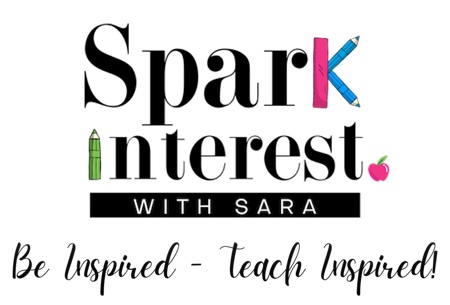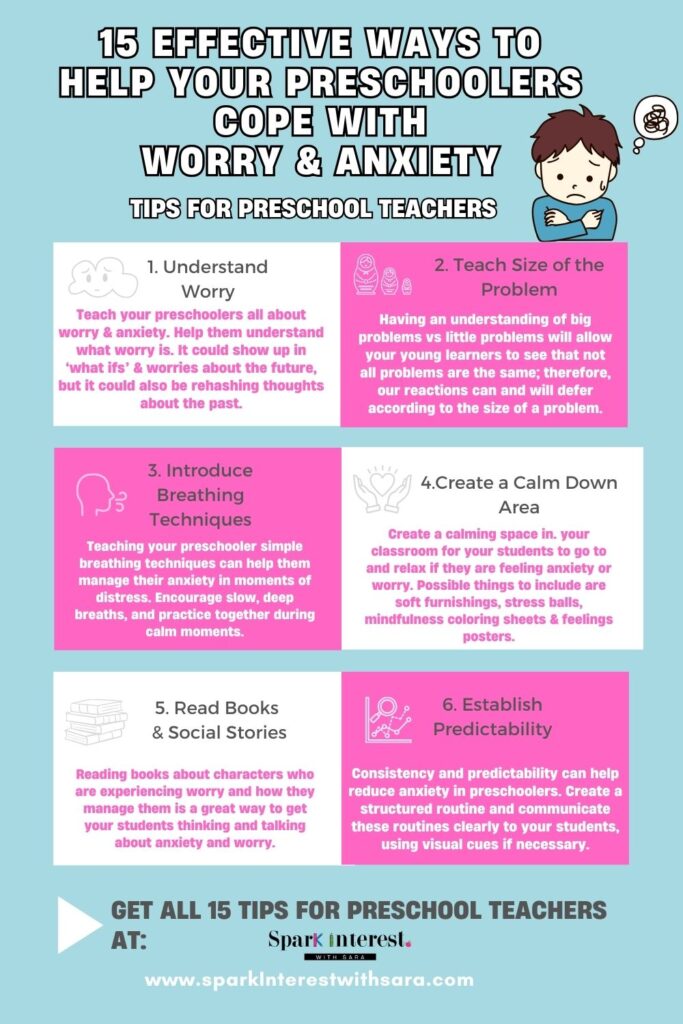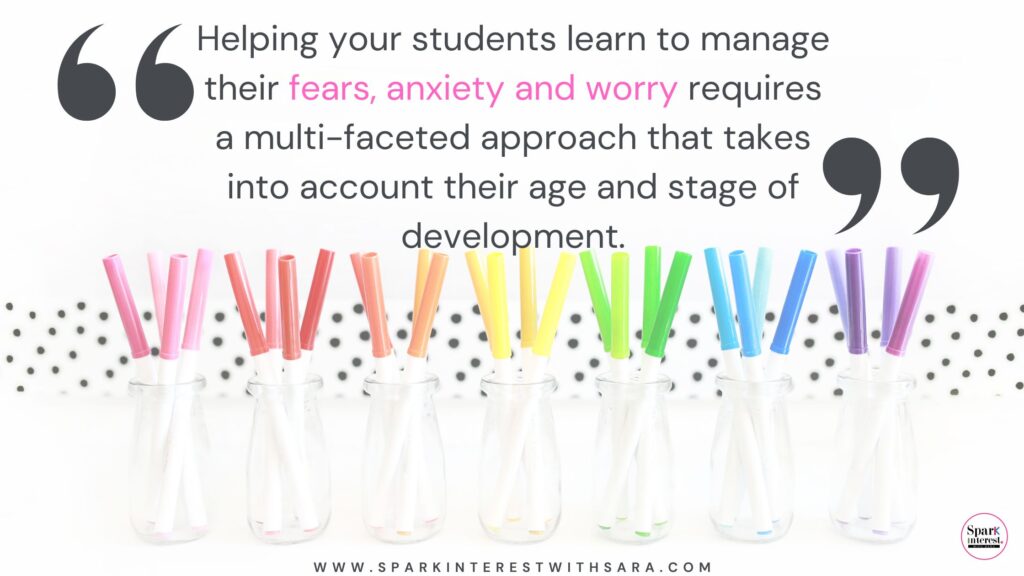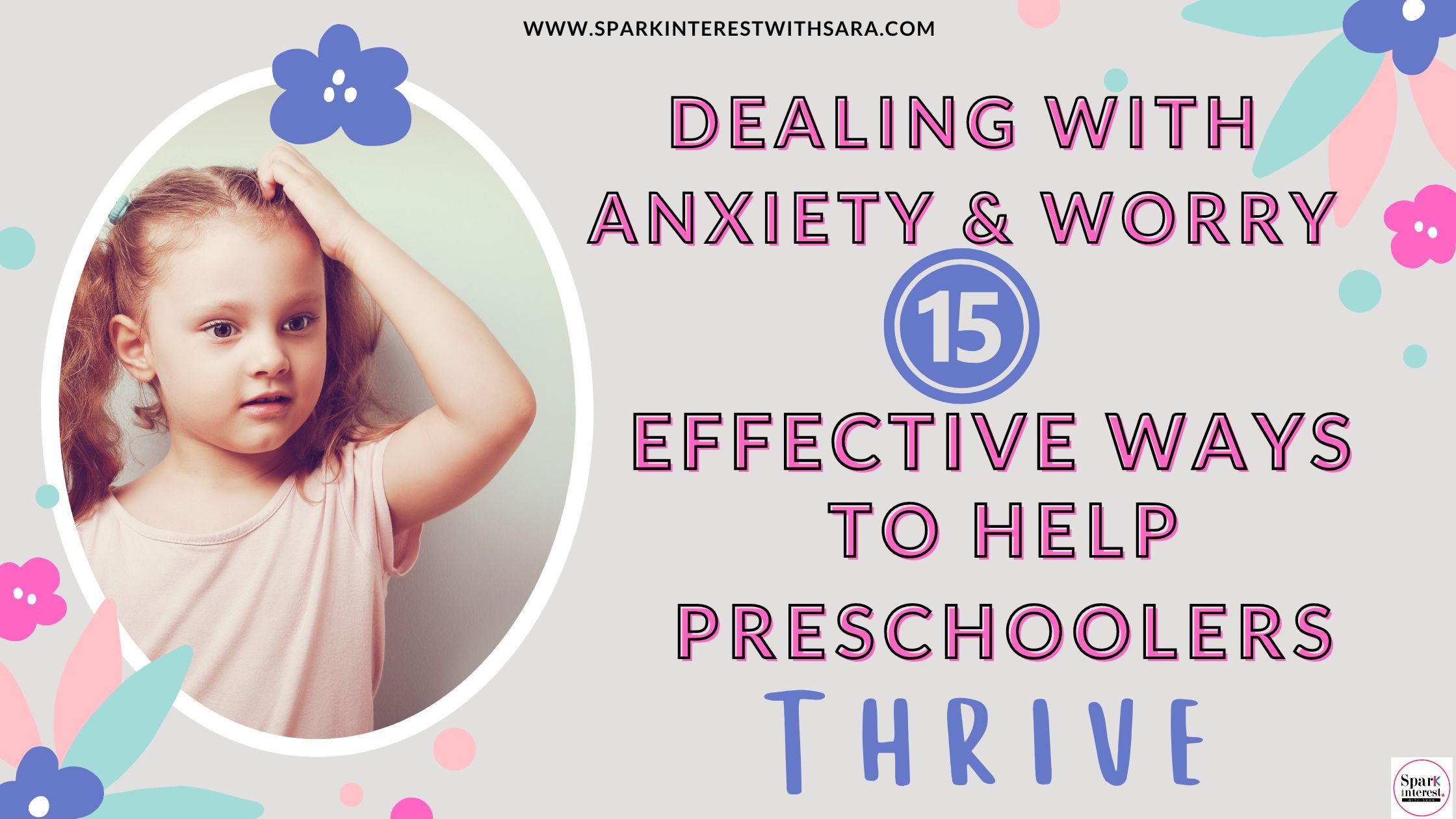
Have you been noticing lately that your preschool students are coming into your classroom experiencing more worry and anxiety? I know that I certainly am. Perhaps it’s the aftermath of Covid where we as a society are just experiencing more worry and anxiety ourselves and that has shaped how our children are coping. Dealing with anxiety and worry can be challenging for our young learners but here’s how you can help!
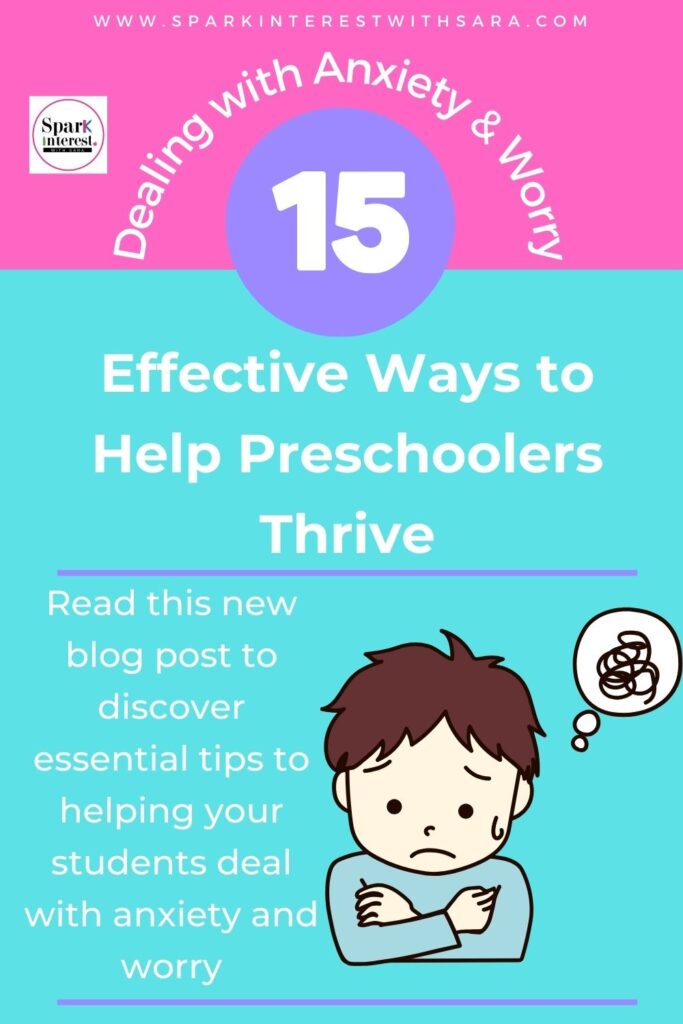
In this comprehensive guide, I will delve into various approaches to managing anxiety and worry in preschoolers. From simple breathing exercises and calming routines to teaching the size of the problem and ways to manage the feelings around fear and anxiety, I’ll provide you with a wide range of practical techniques to choose from.
But before we jump right in, I wanted to make sure you have downloaded my Free Guide to Easily Sprinkling Social Emotional Learning into your preschool classroom. Things just got easier with these cheat sheets & a planning template to help you get things started!
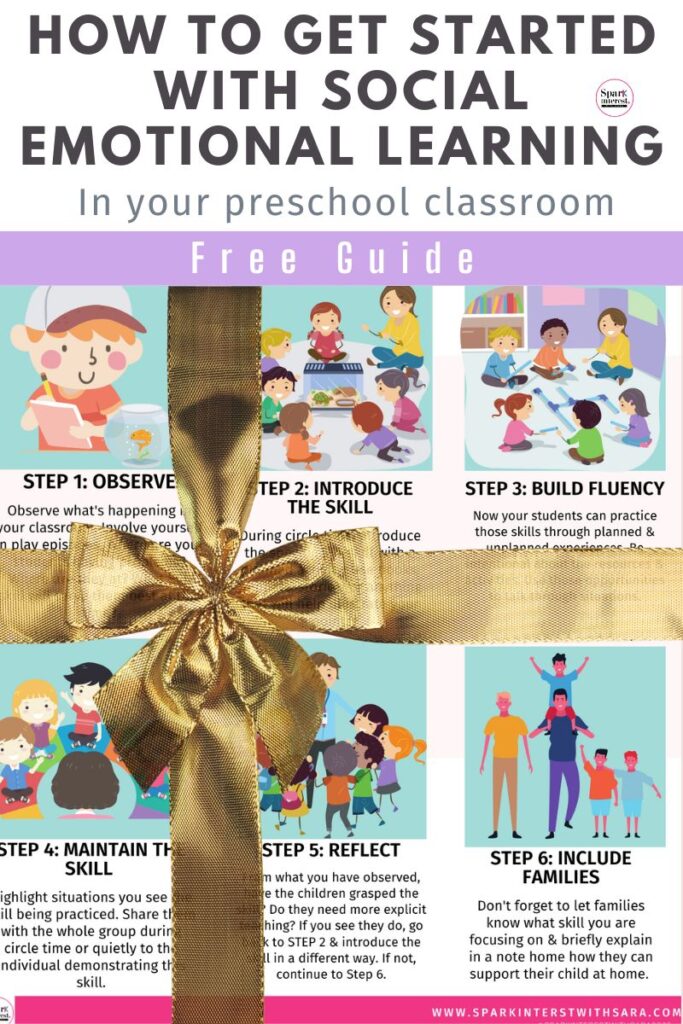
Understanding Anxiety and Worry in Preschoolers
If you really think about worry and anxiety in preschoolers, it is more common than you might consider. Whether it’s separation anxiety, fear of the dark, or worries about making new friends or making a mistake, these emotions can greatly impact their daily lives.
We can as educators play an important role in equipping our students with tools to manage these emotions; however, it is important to note that when anxiety becomes excessive and interferes with their daily activities, we need to seek out professionals to become part of this support team.
Signs and Symptoms of Anxiety and Worry in Preschoolers
Preschoolers may express anxiety and worry in different ways compared to older children or adults. It’s essential to recognize the signs and symptoms early to provide the necessary support. Some common indications of anxiety in preschoolers include:
1. Physical Symptoms: Preschoolers may experience physical symptoms such as stomachaches, headaches, nausea, or fatigue when they are anxious or worried. They may also have trouble sleeping or have frequent nightmares. These symptoms can disrupt their daily routines and affect their overall well-being.
2. Emotional Changes: Anxiety can cause emotional changes in preschoolers. They may become easily irritable, clingy, or have frequent tantrums. Additionally, they may exhibit signs of restlessness, have difficulty concentrating, or show excessive worry about everyday situations.
3. Avoidance Behaviors: Preschoolers with anxiety may try to avoid certain situations that trigger their fears or worries. For example, they may resist going to school or participating in social activities. They may also become overly dependent on their caregivers and seek constant reassurance.
It’s important to remember that every child is unique, and their anxiety symptoms may vary.
Dealing with anxiety and worry: 16 Effective Ways to help preschoolers thrive
Here are some effective strategies to consider:
1. Understanding Worry: Teach your preschoolers all about worry and anxiety. Help them understand what worry is. It could show up in ‘what ifs’ and worries about the future, but it could also be rehashing thoughts about the past.
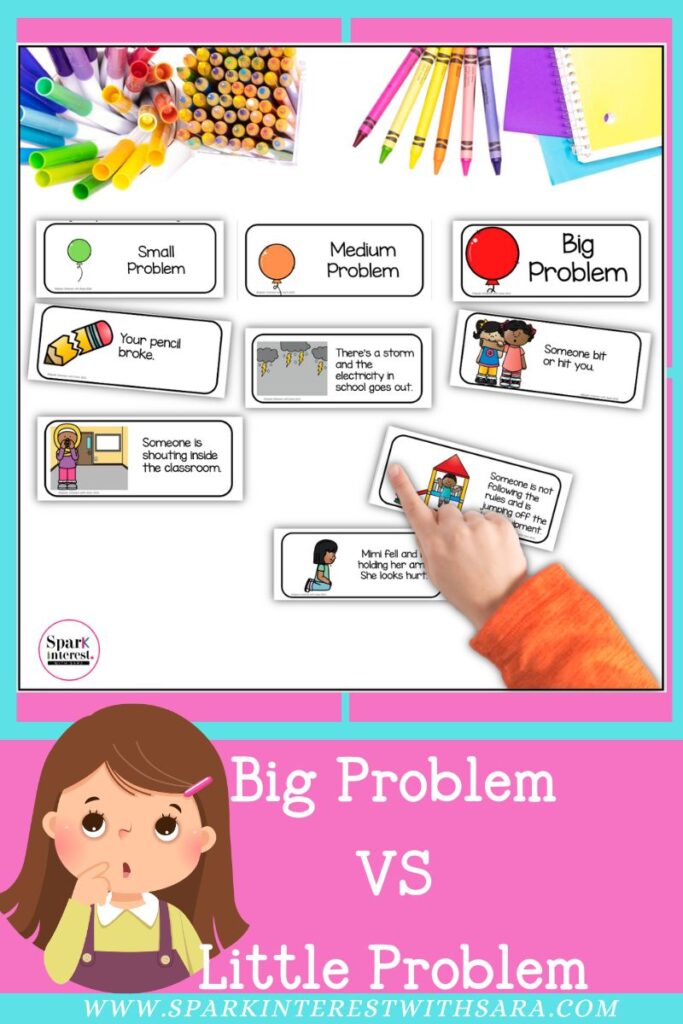
Help your students identify their feelings and emotions and specifically what worry feels like inside our bodies, what it looks like and how it may show itself. Use pictures to show what worry may look like and different words to describe it. It is important to include that sometimes, worry doesn’t look like worry. It may be masked and show up as anger.
2. Teach Size of the Problem: Helping your students see that not all problems are equal, is a great first step in helping your young learners deal with problems that occur in preschool.
Having an understanding of big problems vs little problems will allow your young learners to see that not all problems are the same; therefore, our reactions can and will defer according to the size of a problem.
3. Teach Problem Solving: Once your students can see that the size of problems differ, teach them skills to manage those problems such as conflict resolution skills, how to ask for help when they need it and techniques they can use to manage difficult emotions.
4. Positive Affirmations: Introduce positive affirmations to boost your preschooler’s self-confidence and resilience. Encourage them to repeat phrases like “I am brave,” “I can handle challenges,” or “I am loved and supported.” Incorporate these affirmations into their daily routines using an affirmation mirror or included daily affirmations into your morning meeting.
5. Read Books and Social Stories: Reading books about characters who are experiencing worry and how they manage them is a great way to get your students thinking and talking about anxiety and worry.
Social stories can also help your students understand and navigate specific situations. You could create or find age-appropriate social stories that address your preschooler’s anxiety triggers. Read these stories together, discussing the characters’ emotions and problem-solving strategies.
6. Model: Let your students see how you cope with worry and anxiety. What things do you say to yourself? How do you calm down? Who are the people you turn to? Techniques you use to manage difficult feelings. Our students need to see us modeling how we cope with our own fears and how we are overcoming them too.
Teaching Coping Skills and Relaxation Techniques to Preschoolers
Teaching coping skills and relaxation techniques to preschoolers can empower them to manage their anxiety independently. Here are some strategies to consider:
7. Breathing Techniques: Teaching your preschooler simple breathing techniques can help them manage their anxiety in moments of distress. Encourage slow, deep breaths, and practice together during calm moments. For example, you can ask them to imagine smelling a flower and slowly blowing out a candle.
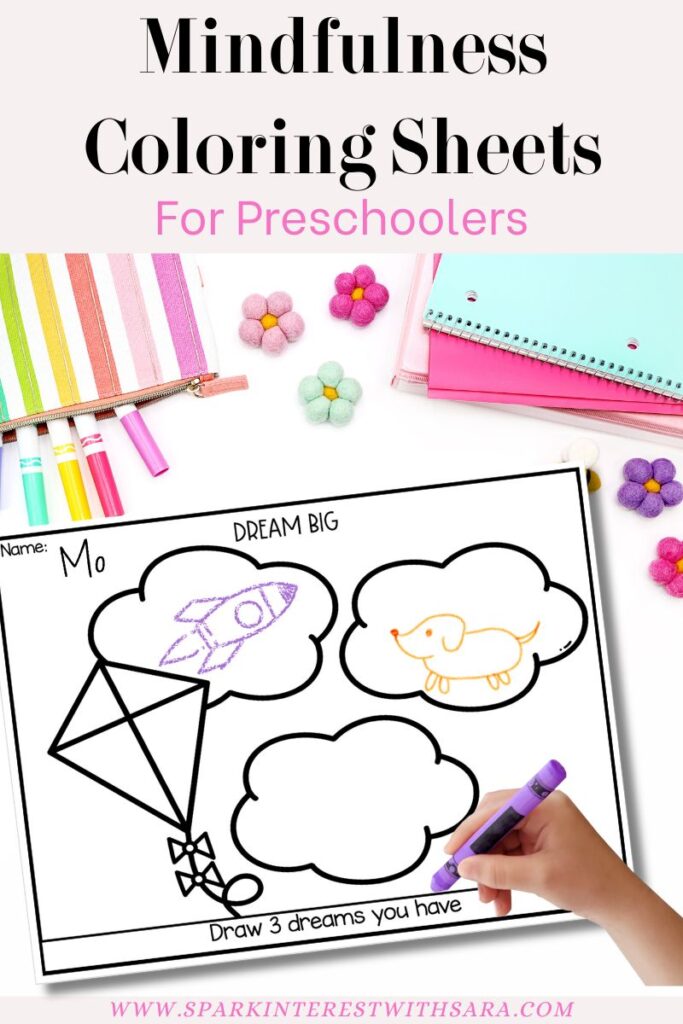
8. Mindfulness Activities: Introduce age-appropriate mindfulness activities to help your preschooler focus on the present moment and reduce anxiety. Simple practices like mindful breathing, body scans, or mindful coloring can be beneficial. Use visual cue cards or guided meditations designed for children.
9. Progressive Muscle Relaxation: Teach your preschooler progressive muscle relaxation techniques to release tension and promote relaxation. Start by having them tense and relax individual muscle groups, such as squeezing their hands into fists and then releasing. Gradually move through their body, helping them relax each muscle group.
10. Sensory Play: Sensory play engages the senses and can promote relaxation and self-regulation in preschoolers. Provide opportunities for them to explore different textures, scents, and sounds through activities like playing with kinetic sand, using stress balls, or engaging in water play.
11. Yoga and Stretching: Gentle yoga poses and stretching exercises can help your preschooler release physical and mental tension. Teach them simple poses like child’s pose, cat-cow, or tree pose. Practice together and make it a fun and playful activity.
12. Create a Calm Down Area: Create a calming space for your students to go to and relax if they are feeling anxiety or worry. You could include soft furnishings, calm down posters, stress balls, positive affirmation coloring sheets, yoga poses cards, calm down visual cards, feelings posters, calming music with headphones and so much more. Looking for more ideas, check out my blog post on essential items for a calming area.
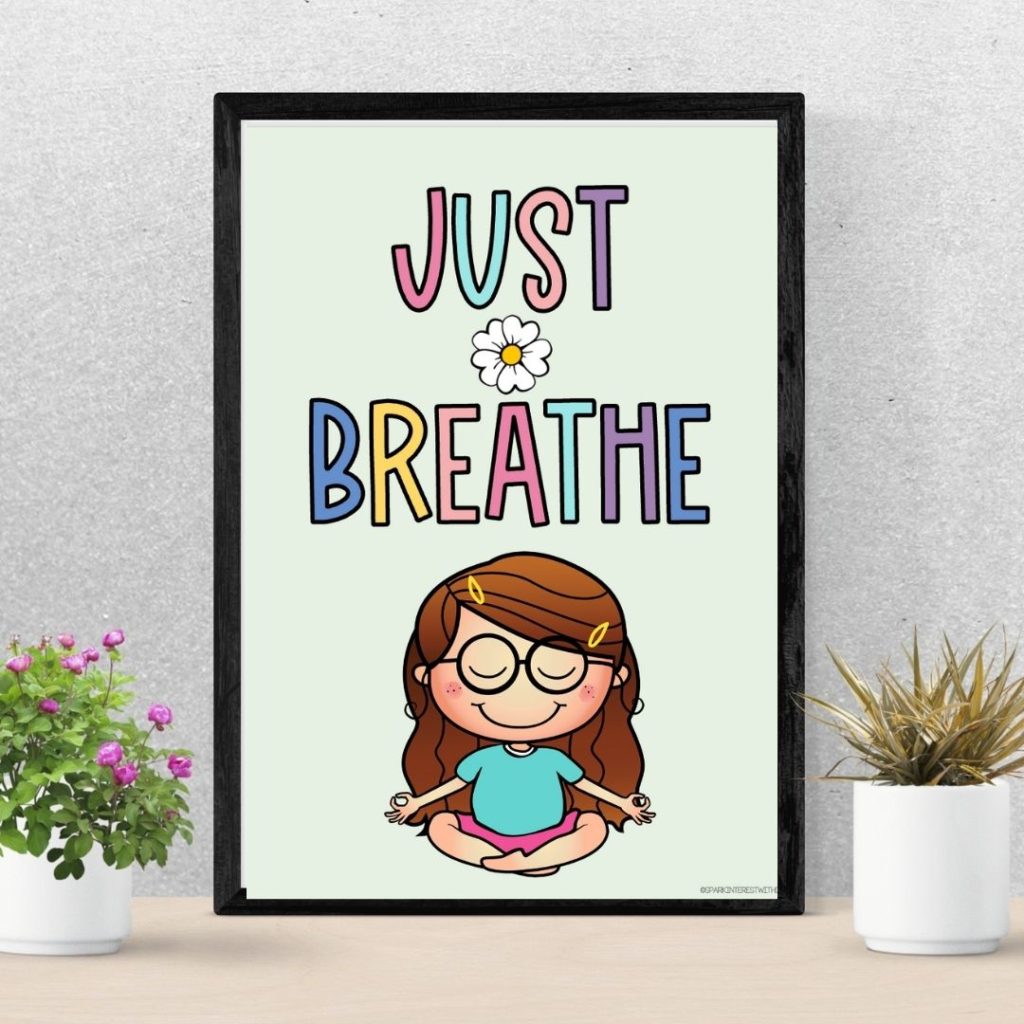
Remember, teaching coping skills and relaxation techniques requires patience and practice. Make these activities enjoyable and engaging for your preschoolers.
Creating a Calm and Supportive Environment for Preschoolers with Anxiety and Worry
Creating a calm and supportive environment is crucial for preschoolers with anxiety. Here are some tips to foster a nurturing atmosphere:
13. Establish Predictability: Consistency and predictability can help reduce anxiety in preschoolers. Create a structured routine and communicate these routines clearly to your students, using visual cues if necessary.
14. Encourage Open Communication: Create a safe space for your preschooler to express their feelings and worries. Encourage them to talk about their fears and validate their emotions. Avoid dismissing or minimizing their concerns, and offer support and reassurance.
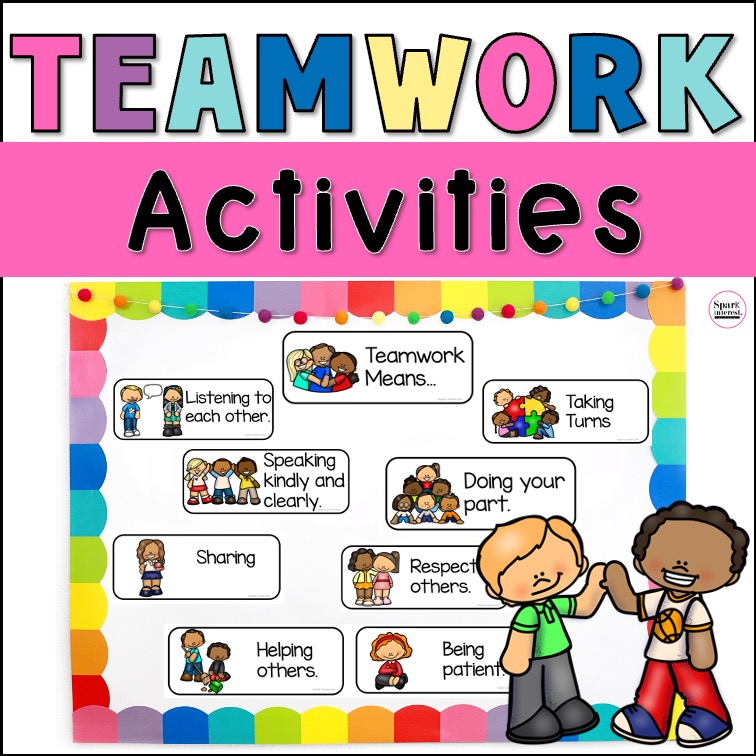
15. Encourage Social Connections: Help your preschoolers build positive social connections with their peers. Include small group or teamwork activities to promote social connection.
Encourage their families to arrange playdates and model healthy social interactions. Socializing can help reduce anxiety and build their confidence.
Support Families and Caregivers with Strategies to help their Anxious Child
Here are some strategies for parents and caregivers that you may provide to help them support their child:
1. Active Listening: Practice active listening when your preschooler expresses their worries or fears. Give them your full attention, maintain eye contact, and respond with empathy. Reflect their feelings back to them to show that you understand and validate their emotions.
2. Provide Reassurance: Offer reassurance and support to your preschooler. Let them know that it’s normal to feel anxious and that you are there to help them through challenging situations. Encourage them to ask questions and provide age-appropriate explanations to alleviate their concerns.
3. Avoid Overprotection: While it’s important to provide comfort and support, avoid overprotecting your preschooler. Encourage them to face their fears gradually and offer guidance as they navigate challenging situations. This will help build their confidence and resilience.
4. Use Visual Aids: Visual aids can enhance communication and understanding. Use pictures, charts, or diagrams to explain concepts, routines, or steps involved in managing anxiety. Visual aids can help preschoolers grasp abstract ideas and provide a sense of predictability.
5. Collaborate with Educators: Maintain open lines of communication with your preschooler’s teachers or caregivers. Share information about your child’s anxiety triggers, coping strategies, and any ongoing concerns. Collaborate on strategies that can be implemented both at home and in the school environment.
Seeking Professional Help for Preschoolers with Severe Anxiety
While many preschoolers can manage anxiety and worry with the strategies discussed, some may require additional support. If your students’ anxiety significantly impacts their daily life or if you observe persistent and severe symptoms, it’s important to seek professional help.
Consulting a mental health professional specializing in child development can provide a comprehensive assessment and guide you and their families on appropriate interventions to support your student.
Dealing with Anxiety and Worry: You can Support Your Students!
Anxiety and worry in preschoolers are common challenges that can be effectively supported with the strategies listed above. Embed them into your practice and make them part of your social emotional learning program for your students today!
By understanding the signs, causes, and impact of anxiety, and implementing strategies such as creating a calm environment, teaching coping skills, and seeking professional help when necessary, you can help your students become more resilient and cope with their fears, anxiety and worry.
Further Suggested Reading:
Let's Connect:

Sara
